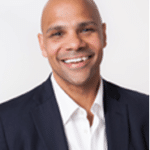Institutional fixed income trading continues to be a challenge, as despite advancements in electronic trading, data management, and workflow automation, efficiently executing a block-sized order is still a heavy lift for investment firms.
With that backdrop, more than 500 industry professionals convene in Boston for WBR’s Fixed Income Leaders Summit, which runs today through Friday.

Mike Nappi, Eaton Vance
“I think most buy-side participants want more efficiencies, improvements in market structure and the liquidity profile of the space, and more orderly trading,” said Mike Nappi, Senior Diversified Fixed Income Trader/Manager of Business Systems Analysis at Eaton Vance.
“In the end I think we all want the same things for the market, and everyone is willing to share ideas at the conference,” said Nappi, who speaks Thursday on a panel about intelligent execution. “Every year the takeaway is the same: How can I take what I’ve learned and implement it on my trading desk?”
Big-picture themes such as liquidity sourcing are perennial discussion points, but the more granular how-to evolves. “Automated execution is a good example of something that wouldn’t have been talked about four or five years ago, because it didn’t exist,” Nappi said. “Is that something that makes the market better? Absolutely, in my opinion. We’re not looking to displace human jobs, we’re just looking to be more efficient as traders.”
Trading-venue operators have expanded their offerings to market participants, as the landscape is years removed from when ‘bulge bracket’ banks were the dominant liquidity source, and the telephone was the primary tool to access that liquidity.

Richard Schiffman, MarketAxess
“Everyone is trying to figure out the best way to trade in an evolving market environment that is quite different than it used to be,” said Richard Schiffman, Head of Open Trading at MarketAxess. “It has improved over the last several years, but we’re certainly not of the view that things are going back to the heydays of the early 2000s where banks had virtually unlimited capital to commit to their clients in the secondary markets.”
Most buy-side firms must do more with less, as the rise of passive investing and other headwinds continue to pressure fees. “They’re looking to save wherever they can, which leads to a desire for more automation, more electronic trading, and just more efficiency in every way they operate,” said Schiffman, who speaks on a Thursday panel about liquidity fragmentation.
Schiffman cited ‘all-to-all’ trading in corporate bonds as a piece to the liquidity puzzle. “It’s a meaningful addition to earlier days when investors would trade only with the dealers they know, even on electronic venues,” he said.
In corporate bonds, the new-issue market and the state of data on the trading desk are two areas seen as ripe for advancement.
“The rate of adoption of new-issue technology in Europe, combined with the recent acquisition of Ipreo by Markit, has created an environment that could foster significant changes to primary market structure,” said Chris White, Founder and CEO of consultancy ViableMkts and data developer BondCLiQ. “Given the importance of the new-issue process to all market participants, it will be interesting to hear the buy side’s innovation priorities.”

Chris White
Market data has surpassed electronic trading as a focus topic over the past 18 months, according to White. “There were great expectations that MiFID II would foster improvements to European corporate bond market transparency, but the results have been underwhelming,” he said. “Meanwhile, the most recent guidance from the SEC fixed income market structure committee suggests that delaying the reporting of transaction data would be a benefit to institutional market participants.”
Technology providers are endeavouring to add value in a fixed income space that is arguably more open for disruption than other asset classes that are further along in their evolution towards electronic trading and automation.
“The global fixed income markets landscape has been transforming dramatically, influenced by changes in market structure, the evolving regulatory environment, liquidity shifts to the buy side, fragmentation of trading venues and proliferation of trading protocols,” said Don Henderson, Senior Vice President, Product and Customer Success, IPC, a provider of communications and networking services. “Consequently, there is a clear push towards greater transparency, stricter risk management practices and a stronger regulatory regime.“
“Market participants need innovative technology solutions not just to keep up but to also gain ground,” said Henderson, who is attending the WBR conference. “Cloud-based solutions are providing compliant connectivity and communications as well as reliable, secure ‘anytime, anywhere, any device’ access to counterparties, liquidity venues, market data and trade lifecycle services, allowing the fixed income markets to address the complex and challenging communications and workflow requirements they face.”
Broadly speaking, “Liquidity challenges persist, but rather than bemoan things that maybe aren’t changing as fast as we’d like, we continue to look for solutions,” said Nappi of Eaton Vance. “We have a lot of technology companies that are helping, and a different buy-side mentality. Ten years ago, just to get a trader to trade electronically was a challenge. That has changed.”






